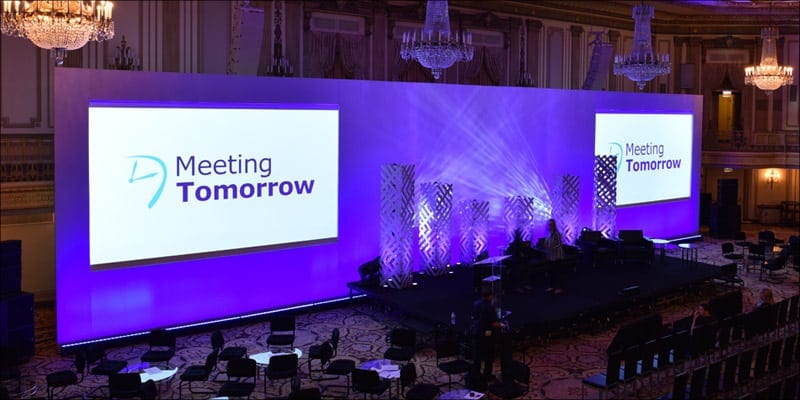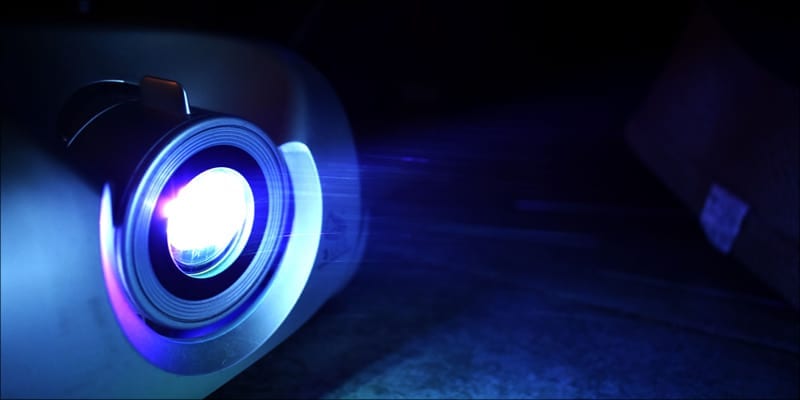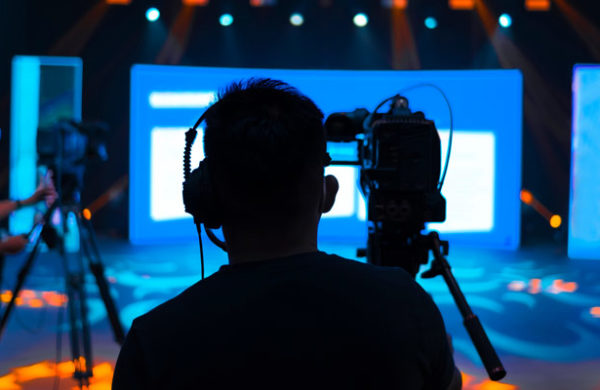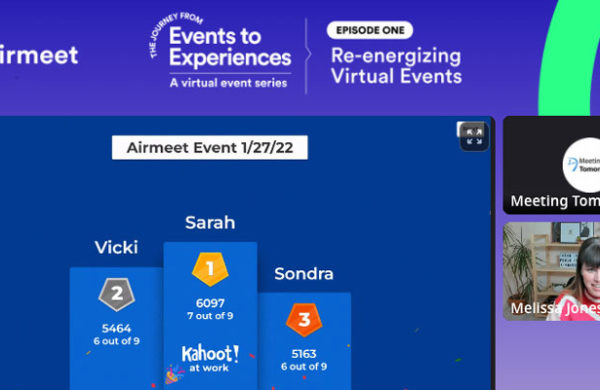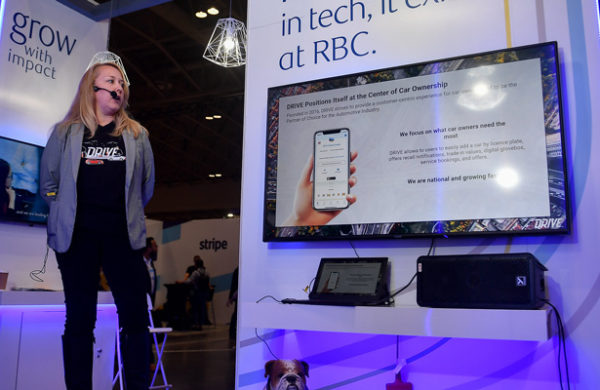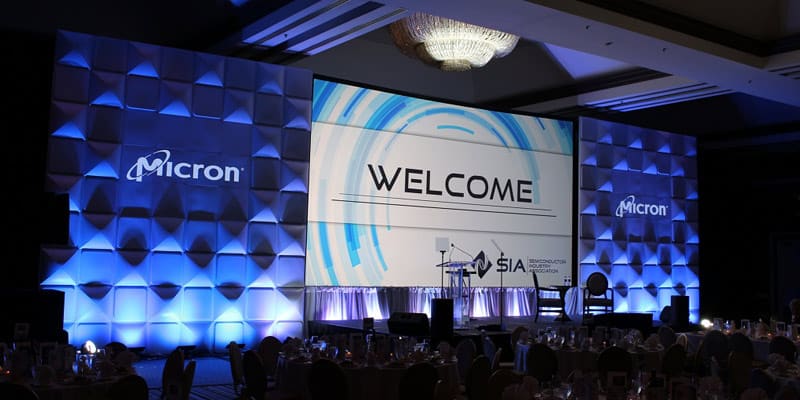
Screens. Whether it’s smart phones, tablets, laptops or PC’s, rich media has increased the demand for information delivered through screens ‘ of all sizes, all the time. Events, talks, presentations and meetings, regardless of the size of room or venue are no exception. Audiences expect communications to be shared though easy to see (and find) visual displays like screens. To increase audience engagement, organizations are shifting more resources toward screens and projection, while event planners and technicians are paying greater attention to the locations of screens at their meetings and events, along with other visual cues that help their attendees to find the information they need. Below you’ll find our guide to selecting screens and projectors, in addition to some advantages and disadvantages of leveraging various types at your events.
1. Choosing the right projection screen
The industry standard for screens has moved from a 4:3 to a 16:9 aspect ratio. What this really means is that there are 16 inches of width for every 9 inches of height. There are many screen rental options for events and below are the most common screens you will come across when putting together a meeting or event.
Tripod screens
Tripod screens are most commonly used for small meetings ‘ think breakout sessions, dinner meetings and anytime that you need a really convenient screen. The built-in stand and roll-up and down features allow for easy set ups and quick wraps. Tripod screens work well in smaller rooms and venues and are cost effective ‘ great if you aren’t looking for anything too fancy.
Fast-fold screens
The technical name for the most common large meeting screen can be a bit misleading ‘ there is nothing fast about setting up these screens and they take a technical team to assemble. These screens come in a wide range of sizes, can be flown from the trussing or positioned on the floor and they blend into a drape line when used with a drape kit. It should be noted that fast-fold screens come in 4:3 or 16:9 sizes, but unlike the tripod screen it cannot be switched on the spot. You must order the correct ratio.
Custom screens
Larger stage productions may benefit from an ‘ultra-wide’ or custom screen. These screens are typically larger and will require more technical labor than the more traditional fast-fold screens. This is due to the size, additional rigging and scenic pieces typically being incorporated in a custom screen. Custom screens can offer a really impactful visual focal point for the audience.
2. Choosing the right projector
Projection screens can’t do their job without the right projector. With so many options, how do you know what the right choice is? When considering a projector rental for your event, the two most important factors are brightness and resolution. Proper resolution ensures that whatever you are showing on the screen looks as you intended.
Projector brightness
Projector brightness is called lumens, ANSI lumens or simply ANSI. Factors that affect brightness also include the size of the screen, the distance that the projector is placed from the screen (throw distance) and the amount of ambient light in the room. Essentially,I like to think of projectors like a flashlight: the light spreads out across the surface the further away that you are. So, the bigger the surface and the farther away you are the brighter the light needs to me. For a quick reference, minimum projector brightness matched with screen sizes:
- 8′ Tripod screen: Minimum 2,000 lumens
- 5.5′ x 10′ Fast-fold screen: Minimum 4,000 lumens
- 9′ x 16′ Fast-fold screen: Minimum 8,000 lumens
- 11.5′ x 20′ Fast-fold screen: Minimum 12,000 lumens
Projector resolution
This best way to describe the resolution is to consider the number of pixels a projector puts onto the screen – the more there are the better the image will be. Today, 1080p or 1920 x 1080 is increasingly being referred to as the industry standard. Although 4K resolution ‘ a higher resolution roughly four times the resolution of 1080p – is increasing in popularity, it’s costly and should be avoided unless completely necessary. You should be sure to consult with your audio visual (AV) partner before using 4K.
Projector types
The range of projectors varies from liquid-crystal display (LCD) to digital light processing (DLP) to laser. Although DLP is replacing LCD, laser is set to become the projector of the future.
Liquid-crystal display (LCD) and Digital light processing (DLP) LCD projectors used to be the industry standard, but are being phased out by most companies as digital light processing projectors offer better quality at a competitive cost. DLP is now becoming the standard within the industry.
Laser projectors Relatively new to market, laser projectors have a bright future. With the LCD or DLP projector lamps only lasting 3,000 to 6,000 hours to the laser projector’s 16,000 to 20,000 hours, cost efficiency and reliability is the advantage.
Closing Thoughts
As I mentioned at the start of this article, audiences at events, talks, presentations and meetings, regardless of the size of room or venue now expect communications to be shared though easy to see visual displays. You, as the meeting or event planner, need the right AV equipment and advice to successfully meet your audience’s expectations. I hope that this a helpful guide for you and your teams as you plan your next meeting or event.
Want more helpful event AV tips? Download our free eBook, “AV 101 for Meeting Planners and Event Professionals.”
